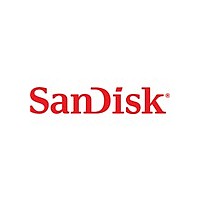FFD35-U3S-48-P80-P SanDisk, FFD35-U3S-48-P80-P Datasheet - Page 60

FFD35-U3S-48-P80-P
Manufacturer Part Number
FFD35-U3S-48-P80-P
Description
Manufacturer
SanDisk
Type
Flash Diskr
Datasheet
1.FFD35-U3S-48-P80-P.pdf
(70 pages)
Specifications of FFD35-U3S-48-P80-P
Density
48GByte
Operating Supply Voltage (typ)
5V
Operating Temperature (min)
0C
Operating Temperature (max)
70C
Package Type
Not Required
Mounting
Socket
Pin Count
80
Operating Temperature Classification
Commercial
Operating Supply Voltage (min)
4.5V
Operating Supply Voltage (max)
5.5V
Programmable
Yes
Lead Free Status / RoHS Status
Supplier Unconfirmed
13. F
Q: What is SCSI?
A: SCSI (Small Computer System Interface) is a general-purpose, parallel bus system. It
Q: What is SCSI-1?
A: SCSI-1 defined a universal 8-bit I/O bus that allows connecting up to 8 devices, including
Q: What is SCSI-2?
A: SCSI-1 was the first approved standard and lacked various parameters and definitions.
Q: What is SCSI-3?
A: With SCSI-2, SCSI-3 was defined as an option. Despite the tendency of the market to define
Q: What is Wide SCSI?
A: Another SCSI-2 option is Wide SCSI, which has two defined types, 16 bit and 32 bit. The
60
originated from Shugart‟s 1979‟ SASI (Shugart Associates System Interface) and Shugart
and NCR presented it to the ANSI in 1981. It became official in 1986, when the ANSI-
committee X3T9.2 defined the SCSI-1 specification as document X3.131-1986.
SCSI in all its flavors is now an acknowledged and standardized multi-purpose interface.
SCSI supports a wide variety of devices, including hard disks, removable disks, magneto-
optical devices, tape drives, printers, processors, WORMs, CD-ROMs, scanners, medium-
changers (jukeboxes), and communications devices.
the so-called “host adapter”. Every device must have a unique ID in the range of 0 to 7.
SCSI-1 was a high-speed bus system compared to the era‟s peripheral devices.
SCSI-2 development and approval started even before SCSI-1 was officially approved, In
1986, when SCSI-1 was officially approved, SCSI-2 already was in the process of being
developed. The official SCSI-2 designation is X3.131-1994.
SCSI-2 provided a better formal definition, removed some oddities and obsolete items,
added some extensions, and most importantly, added the ability to double and even
quadruple data transfer speed on the SCSI bus with its Fast SCSI and Wide SCSI options.
SCSI-3 as a “different, but faster SCSI”, SCSI-3 is only an additional Ultra synchronous
data transfer mode with tighter timing to achieve the 20 MB/sec maximum data rate. As
with any other synchronous transfer mode, only data transfers are synchronous, the
commands are transferred asynchronously.
Wide SCSI bus, used in “Ultra” transfer mode, can provide up to a 40 MB/sec data rate.
The X3T9.2 committee defined a 68-pin SCSI cable for 16-bit and a combination of a
standard 8-bit „A‟ and a 68-pin „B‟ cable for 16-bit and 32-bit Wide SCSI. Wide SCSI host
adapters can address standard SCSI devices without problems provided that a correct
adapter cable is used.
U
REQUENTLY
LTRA
320 SCSI
A
SKED
Product Specification and User Manual
Q
UESTIONS
(FAQ
S
)
ABOUT THE
SSD (Formerly FFD) Ultra320 SCSI 3.5"
43-PS-0305-00 Rev. 2.2
SSD 3.5”












